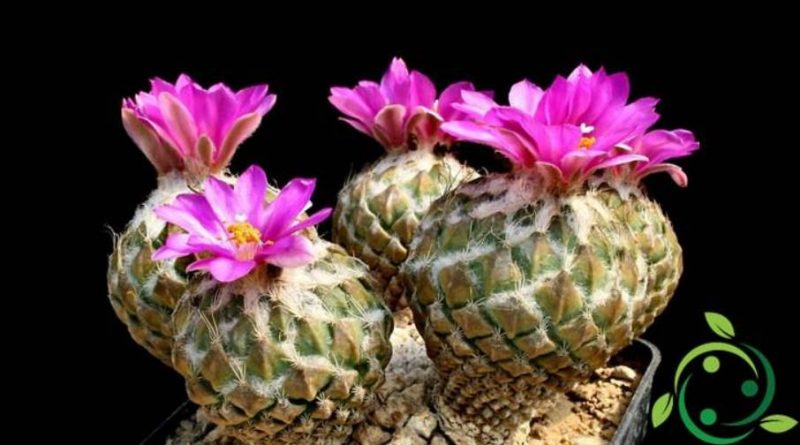How to grow Pelecyphora
How to grow Pelecyphora
Pelecyphora (Pelecyphora C. Ehrenb) are a genus of plants belonging to the Cactaceae family, originating in Mexico that include two species with globular stems and small crested spines.
These plants are recognized for having the stem is globular, divided into tubercles which are however not very pronounced and are flat on the surface and where there are woolly areoles from which a series of combed and not pungent spines are born, which give the plant an extremely particular appearance .
They have strong and fleshy roots and bright pink or fuchsia flowers, funnel-shaped and with narrow petals that grow on the top of the plant in spring.
The species are:
– Pelecyphora aselliformis – about 5 cm in diameter, with a globular shape that becomes cylindrical with aging, has gray-green tubercles flattened laterally, the spines are small and the flowers have a purplish color;
– Pelecyphora strobiliformis – with a globular stem that reaches about 8 cm in diameter; it has gray-green tubercles shaped like scales and areolas with small hairy tufts; the flowers have green petals on the outside and purple inside.
In this card we will see how to grow Pelecyphora considering that they are not particularly complex plants to cultivate but they have a very slow growth.
In any case, these plants, given their origins, should be placed in a well-ventilated area, in full sun, and should be watered very carefully.
For this reason it is necessary to choose a sunny but very well-ventilated position in order to limit the risk of burns in summer and of rotting in winter, with temperatures that never fall below 7-8 ° C, so, in cold areas, it is necessary to provide for shelter these plants.
For the selection of the growing medium it is advisable to use a type of ground for cactaceae, generally consisting of a mix in equal parts of peat and coarse sand. To limit the risks of collar rot, a light layer of sand can be placed around the area where the plant comes into contact with the ground. For fertilization, if the plant is cultivated in a pot, just dilute a specific product for cacti in the water of the watering and use once a month. If the plant is grown outdoors, it is sufficient to add mature manure to the base of the plants, without disturbing the collar of the plants, during the spring vegetative recovery.
Irrigation should be done between March and September, during the growing season; the water supply should be done whenever the soil is completely dry. In the then autumnal period the waterings must be reduced until they are completely suspended in winter.
The multiplication of Pelecyphora must be carried out by seed in a fine sandy soil which must be kept humid and in a shady position at a temperature of 20 – 22 ° C. The long germination will produce seedlings that will be kept in a shady position throughout the first year. Although the plant produces many suckers, they struggle to root; also the growth of the seed is very slow: this is why this plant is very difficult to find on the market.
Pelecyphora repotting should be done very rarely as they are slow growing plants.

